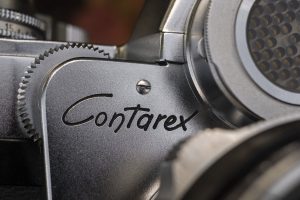
Earlier this week, I posted my take on the Zeiss-Ikon Contarex “Bullseye”. Feedback to that article has been very good with most people who’ve handled it before, agreed with my assessment that while it was a pretty camera with an amazing Rube-Goldberg-like complexity, it wasn’t a very good user.
Sometimes, when we have decades of experience to look back upon, our opinions of a device, whether it’s a camera or anything else, can change. So for this week’s Keppler’s Vault, I thought it would be interesting to immediately follow up my Contarex review from 2019 with two reviews written decades before.
The first is from the Dec/Jan 1962 issue of Camera 35, and came out barely two years after the Contarex first became available to photographers. By that time, the initial excitement over the camera was over and the people who were fortunate (maybe even crazy) enough to buy it, could reveal it’s strengths and weaknesses. It’s also worth noting that by 1962, the Nikon F had already been on the market for 2 years as well, competing for nearly the same market as the Contarex.
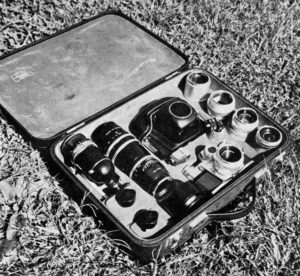
One thing in this article that I found incredibly fascinating which I hadn’t read about anywhere else, even the camera’s manual, is that the Contarex automatically compensates exposure at close focusing distances. This is only mentioned in one paragraph on the first page and does not explain exactly how this works, or what is even considered “close focusing distances”. Does it mean at the minimum 12 inch distance of the 50mm Planar, or with some optional macro attachment. I was not able to witness this feature myself, but I’ll have to do more exploration to determine if this is really true, or some critical error on the part of author Arthur Kramer.
Other compliments echoed mine with the action and location of the aperture wheel, the smoothness and precision of the lens mount, and the quality of the lenses available. Very little is said about the focusing screen which I am still on the fence about.
The rest of the article talks about a variety of lenses that the reviewer had access to and near the end mentions the optional magazine back and the availability of the meterless Contarex Special. I won’t ruin any surprises for you regarding what Kramer ultimately thinks of the camera, so you’ll just have to read it for yourself.
The second article is from the May 1979 issue of Modern Photography and is part of Jason Schneider’s “Camera Collector” column in which Schneider looks back at collectable cameras.
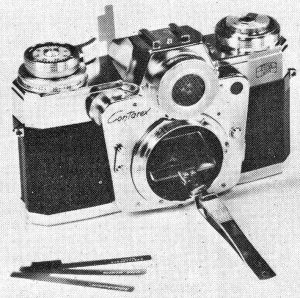
Having the benefit of time on his site, Schneider’s take on the Contarex is more in line with the opinions of collectors today, but at a time when the Conatrex wasn’t quite collectable.
He mentions at one part in the article that until recently, the Contarex was seen by photo dealers as unsaleable turkeys, suggesting these things sat languishing on store shelves with discount prices that would make today’s eBay prices seem ludicrous.
References in the article to the later Contarex Model D and even the Hologon Ultrawide suggest that he based his opinion on the entire family of Contarex cameras, and not just one single model.
I find it very interesting to see these kinds of retrospective articles reminiscing on old cameras that at the time were barely 20 years old, when here I am doing the same thing in 2019. Considering this article from 1979 is closer in time to when the Contarex was actually made than today, this is a retrospective look back at a retrospective look back!
All scans used with permission by Marc Bergman, 2019.

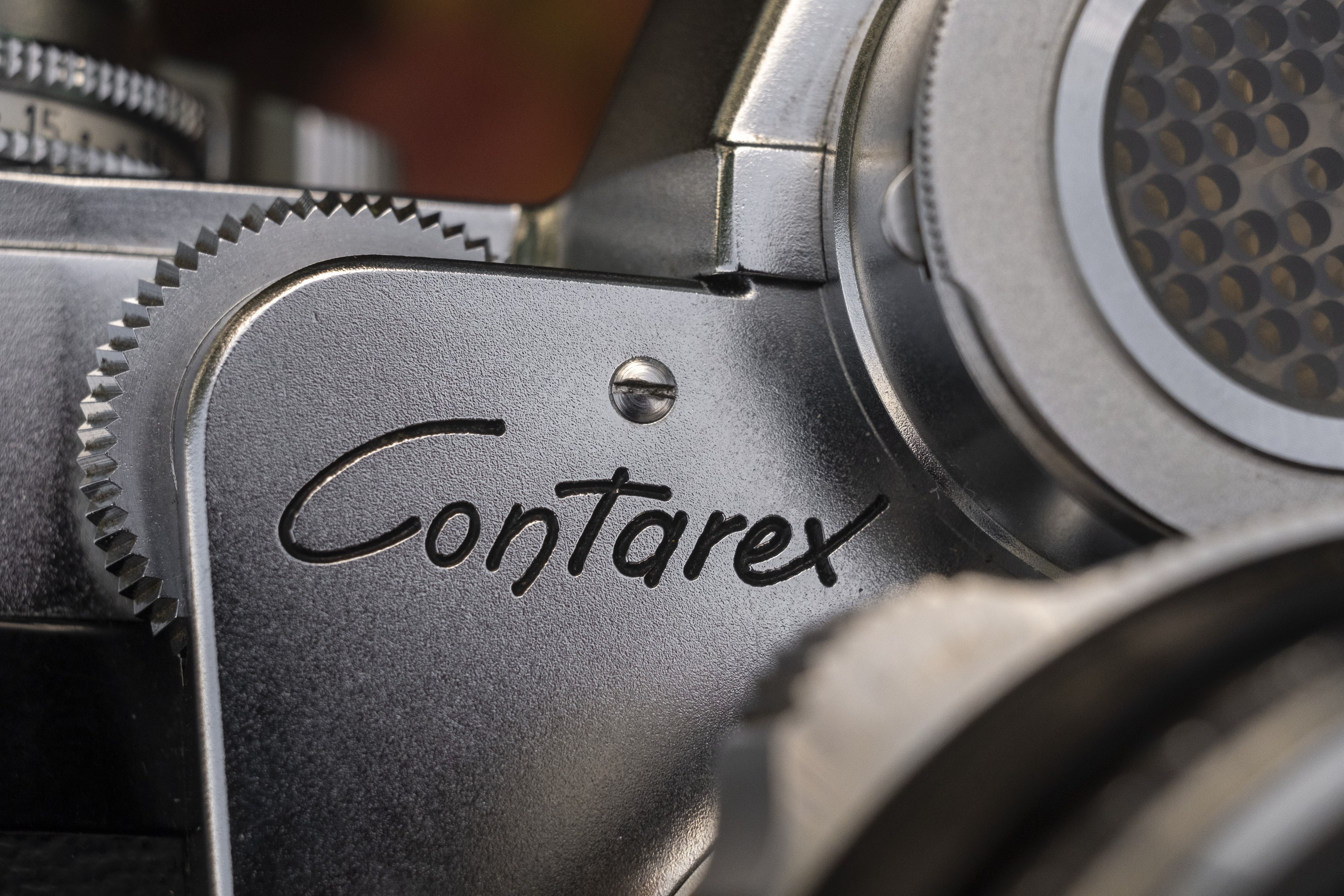
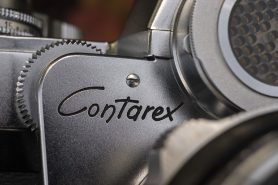
The Camera 35 article on the Zeiss Contarex was very interesting, since I wasn’t a subscriber back then. I read Jason Schneider’s article on the first Contarex when it appeared in the 1960’s and found it to be fascinating. (I recall the Nikon FM’s removable focusing screen hat trick years later as having appeared on the Contarex first.) As for buying a Zeiss Contarex, that was out of the question for a college student who could just about afford a Nikkormat FTN.
Would having a Vivitar, Soligor, or a Spiratone Expandar option for lenses and accessories for the Zeiss Contarex have made a difference in sales? I doubt that, since Zeiss Stuttgart was keeping all of the “keys to the kingdom.” At the time, I continued with what I could afford and pondered what photography would be like with one of the $$$$ SLR cameras of European engineering. (Such as Alpa, Leica, or Zeiss.)
One other observation popped up when Zeiss Stuttgart finally “bit the dust” in the 1970’s. A camera magazine writer compared the fates of the “rich kid” that everyone had wanted to succeed vs. the “sickly, name-changing cousin” in Dresden that had prospered over time. (Pentacon and Praktica back then..) The optical branch tried to build camera bodies/systems, while the body crafters made Zeiss classic lenses and updated them over time. In the long run, the Dresden branch won, though that ended when The Wall fell in the 1980’s.
With film and mechanical cameras occupying a niche market these days, it’s a camera collector’s market, as the “bones of the film-using dinosaurs” are mounted on digital cameras for that “sweet Bokeh” and “hipster-cool” optical abberations. I’ve been tempted by the not-very-numerous listings for Leicaflex SL camera bodies, while marveling at “1-cam/2-cam/3-cam” Leica R lens prices. Is there a Zeiss Contarex in my photographic future? Once can only dream, especially about an “E6 Kodachrome-like” film.
Great insight Patrick! You’re right in the sense that the East German branch of Zeiss-Ikon made decidedly less ambitious choices and survived much longer. I think that by the time when Zeiss and Voigtländer merged, they finally started to realize that making more accessible models like the Icarex series and the less ambitious Vitessa models was a good move, but sadly, it was too little too late. The Japanese had already won.
Mike, I believe that there is a parallel here with people ditching far better digital cameras in favour of the photographically inferior smartphone.
I read your first post with interest, as I have been considering getting this first version of the Contarex to augment my Super, version II. I came across Henry Scherer’s site and formed a rather negative opinion. It seems that I couldn’t even buy a Zeiss lens without it being highly susceptible to cold welding. Wow! He appeared to damn the whole Contarex range. Given that it is now nearly 60 years since they were made, any original Zeiss mechanics are going to be very thin on the ground. But is a complete Contarex service at $1,850 worthwhile? Sure, it may be if one is young enough and willing to use it for many decades to come, but otherwise?
I took a chance with my Super. It’s in excellent cosmetic condition (not a very good pointer according to Scherer) everything declared to be working including the light meter. And so far, so good. I haven’t used it a lot beyond its first test film and all does appear well, but Scherer’s comments about the lubrication Zeiss used has left me with deep a feeling of the camera’s imminent demise without it even being used.
Given the sheer complexity of this camera, any repair will indeed be a problem and not left to amateurs or YouTubers with less than helpful advice.
Today, the camera has to be considered in the same light as Leica’s R series and Early digitals: these are at risk as well – no spare parts etc.
This post looks like I’m on a downer, but then I pick up my Super and enjoy it for what it is – a fantastic example of the finest camera of its era. Nothing the Japanese produced comes anywhere near its build quality for the era. Compared to this, my Nikon Photomic Ftn is somewhat crude, and feels it. More versatility, yes, but as a camera, nothing special to talk about.
The Contarex range is one of those rare items we’ll never see the likes of again in a camera – engineering precision and overkill! And if Scherer is right, it’s achilles heel is the lubrication Zeiss used.)
Mike, I wonder if the Contarex’s claimed exposure compensation at close focusing distances may be something like the early model Micro-Nikkor 55mm f3.5 lenses offer: A mechanical linkage between the lens’s focusing scale and its aperture setting. Now, how this could be accomplished with different lenses on a single body (as opposed to internally in a single lens), I don’t know. But the Contarex is a marvel of over-the-top engineering design, is it not.
Yes, I agree with Terry B. after reading Henry Sherer’s extensive and candid article on the Contarex system being a very risky bet on the secondary market due to high likelihood of eventual breakdown without complete servicing by an expert like Henry. Even during it’s 18 year production run there were enough returns for warranty repair due to design issues that it literally bankrupted their camera manufacturing division not to mention that it cost more to make the camera than the cost of sale. Fortunately, it didn’t stop them from continuing to make top notch photographic lenses but as a producer of cameras from Zeiss or through partnerships with Kyrocera or Cosina providence was not on their side.